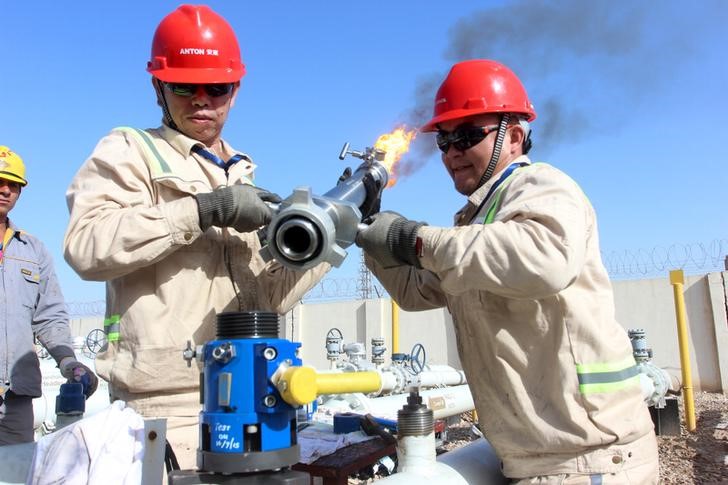Investing.com — Oil prices edged higher Tuesday, as traders attempted to balance an improved outlook for global demand from the IEA with weak Chinese economic data.
By 08:30 ET (12:30 GMT), futures traded 0.2% higher at $71.23 a barrel, while the contract rose 0.2% to $75.34 a barrel.
The lifted its forecast for global oil demand this year, saying world fuel consumption will increase by 2.2 million barrels a day in 2023, around 200,000 barrels a day more than previously forecast.
The Paris-based body based this increase on heightened Chinese demand, saying the post-pandemic rebound in the world’s largest crude importer will beat expectations.
“Chinese demand for oil broke new ground in March, vaulting to the highest mark ever recorded,” the agency said, and while there has been a recent slowdown, “the vast majority of the projected demand recovery is already in train.”
That said, data released earlier Tuesday offered ample evidence of the patchy recovery in China’s economy, the second largest in the world, as both and data missed expectations for April.
While both readings still advanced at a steady clip from the prior month, their falling behind market expectations further pointed to a staggered recovery in Asia’s largest economy.
The IEA added that global oil markets will tip into deficit this summer, causing prices to rise, as the Organization of Petroleum Exporting Countries and its partners, a group known as OPEC+, implement a new round of production curbs.
On the flip side, the agency calculated that Russian shipments of crude and refined oils reached a post-invasion high of 8.3 million barrels a day in April, challenging the rhetoric coming from Moscow about cutting production levels.
The crude market had received a boost earlier in the session with the confirmation that the U.S. plans to refill its heavily-depleted strategic reserves.
The U.S. Department of Energy said on Monday it would buy 3 million barrels of crude oil for the Strategic Petroleum Reserve for delivery in August, and asked that offers be submitted by May 31.
The move comes after the Biden administration drew the SPR to its lowest level since 1983 over the past year in a bid to bring down record-high fuel prices spurred by the Russia-Ukraine conflict.
The , an industry body, is set to release its weekly estimate of U.S. crude stocks later in the session.
Read the full article here








